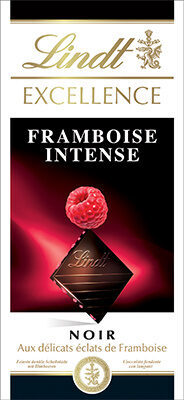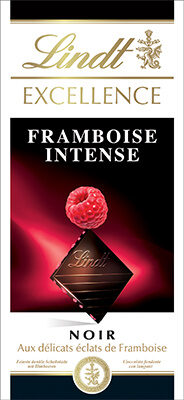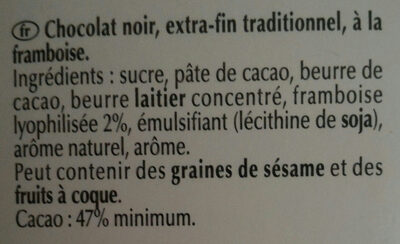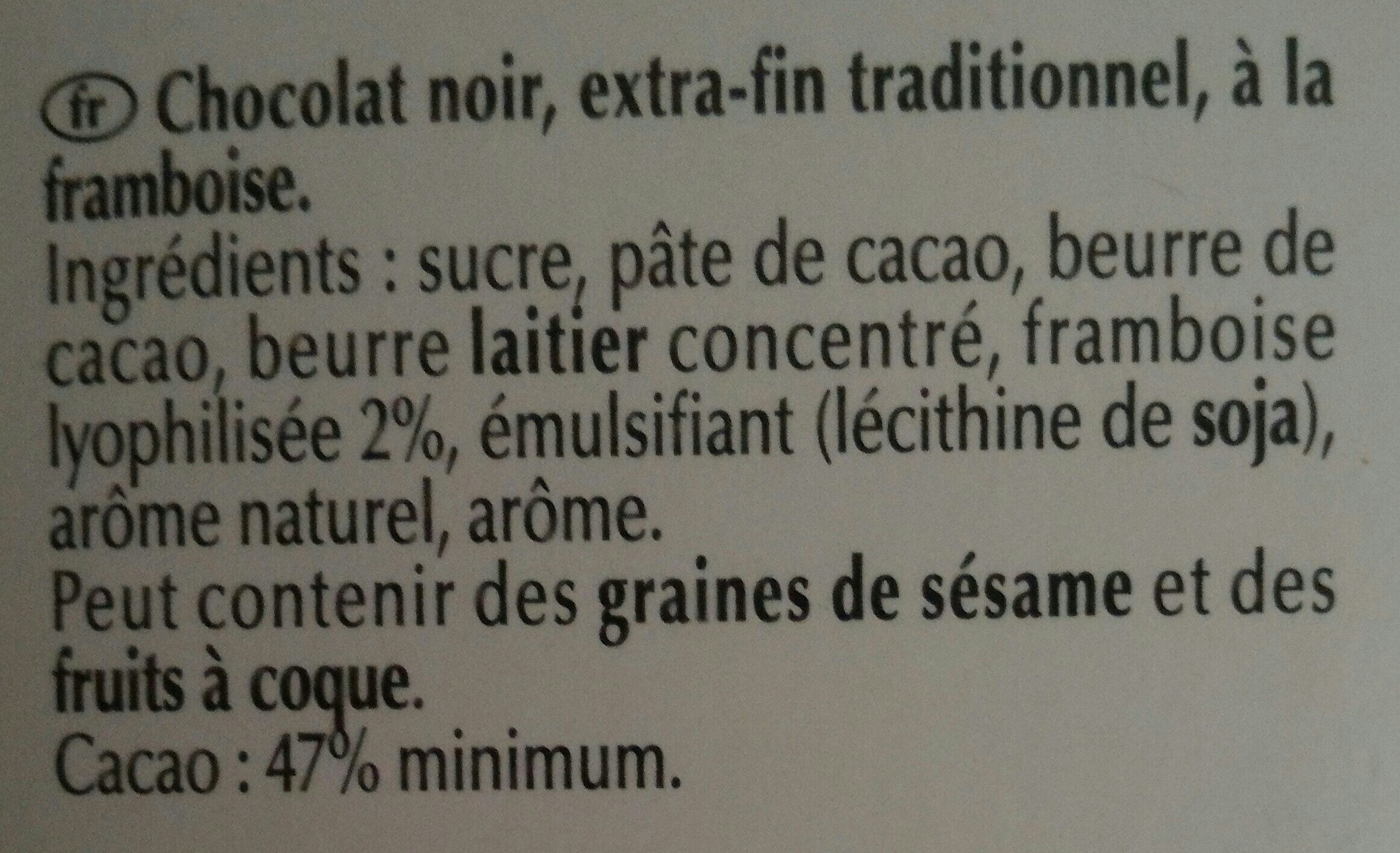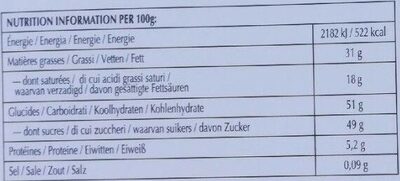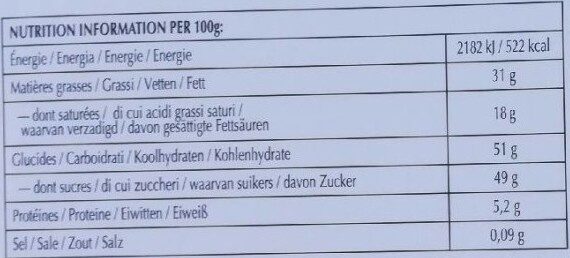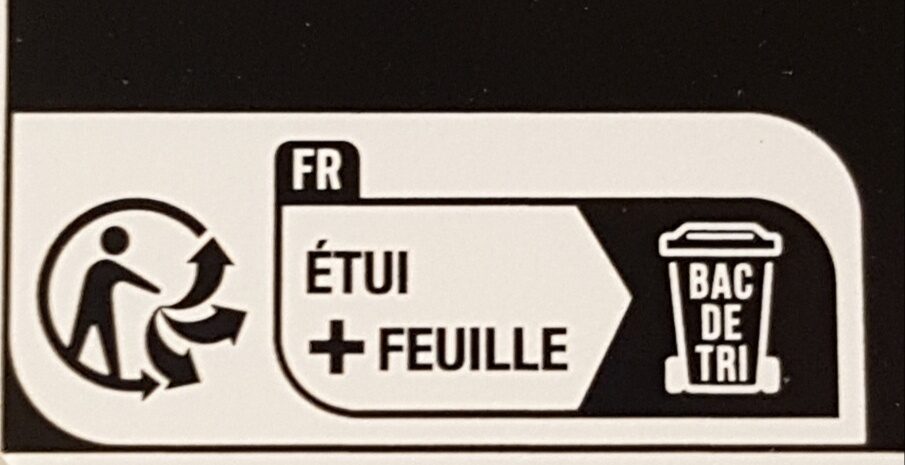Excellence Framboise intense - Lindt - 100 g e
This product page is not complete. You can help to complete it by editing it and adding more data from the photos we have, or by taking more photos using the app for Android or iPhone/iPad. Thank you!
×
Barcode: 3046920010603 (EAN / EAN-13)
Quantity: 100 g e
Packaging: fr:1 étui en carton à recycler 1 feuille en aluminium à recycler
Brands: Lindt
Categories: en:Snacks, en:Sweet snacks, en:Cocoa and its products, en:Chocolates, en:Dark chocolates, en:Extra fine dark chocolates
Labels, certifications, awards:
en:Pure cocoa butter, Triman
Manufacturing or processing places: France
Stores: Cora, Magasins U, Woolworths, Intermarché, Mercado Nacional, carrefour.fr, Coles, Carrefour
Countries where sold: Ahitereiria, Ateria, Parīhi, Wīwī, Aotearoa
Matching with your preferences
Report a problem
Data sources
Product added on by tacite
Last edit of product page on by fgouget.
Product page also edited by archanox, ccrdz, date-limite-app, driveoff, ecoscore-impact-estimator, feat, foodless, foodrepo, foodvisor, gala-nafikova, idkplog, inf, kiliweb, lcmortensen, ledruide55, macrofactor, magasins-u, mariacastiel, nanie293004, openfoodfacts-contributors, packbot, quechoisir, smoothie-app, thaialagata, yuka.Ri85WUtid2l2dU1RdHNjLytRS0ozZmhvNnJtd1ZtcWJKL0kySVE9PQ, yuka.UW9VS0xib0RtTnhYcS8wbi94ZUk5ZkovMWEybFZscTJOK2tLSVE9PQ, yuka.V2Y0ZVRLc1ppL1F5bmYwRDBDSFA1T3NxOTdxT1FGcThNc3dPSVE9PQ, yuka.VGZzNUhva3IrUDBZdTlzR3hqUDR4Y2h0bTd1VVpXSzBCckFBSVE9PQ, yuka.VktrN1M0WUZ2OTRraXNZRndoL2M5OUpjN1pXblptbTFHck5NSVE9PQ, yuka.WW9rTEUvazh2UElVb3NjU3IwcU0wTXRveG9HWVlGKzBHYmNPSWc9PQ, yuka.WjVnR0NyWWNnS1F0dGZCanBEK0w2b2gzbUppcFRUT0xLL1kvSVE9PQ, yuka.sY2b0xO6T85zoF3NwEKvllNAS_H-vCzAMQ75wWGpwvWUMp3oZ9Qi6YfHMqg.
